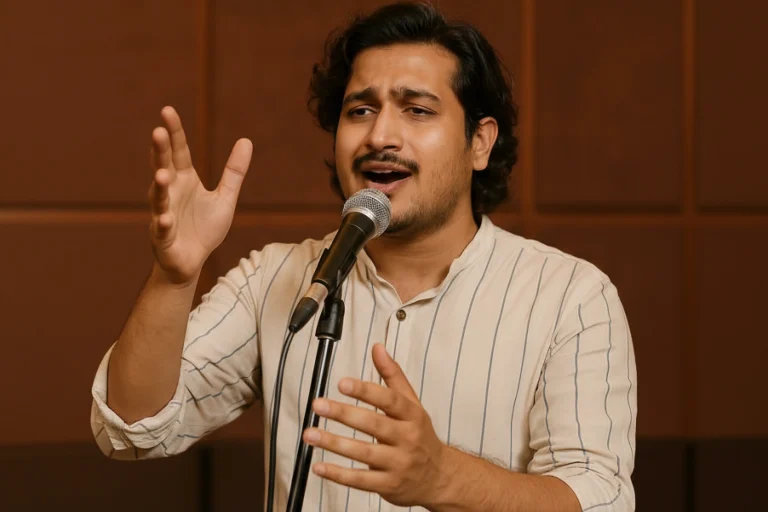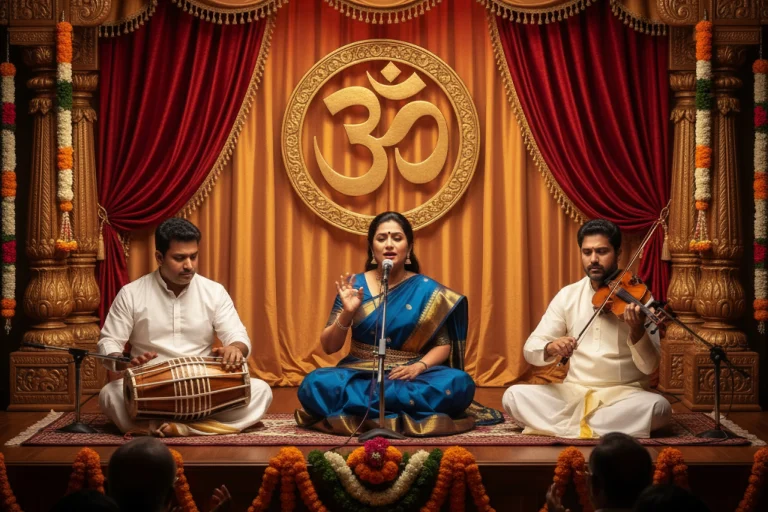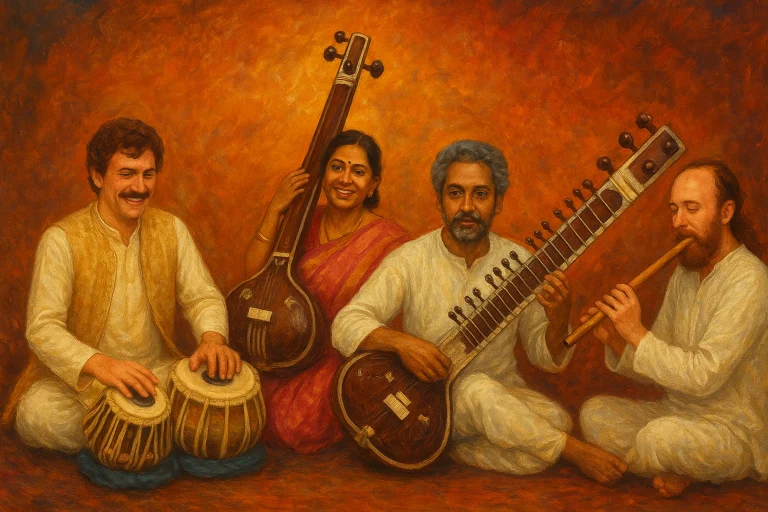All Topics
- Alchemizing Music Concepts for Students
- Artist Spotlight
- artium gift card
- Artium Maestros
- Artium News
- Carnatic Music
- Devotional Music
- Editorials by Ananth Vaidyanathan
- Film Music
- Guitar
- Hindustani Classical Music
- Indian Classical Music
- Indian Folk Music
- Insights
- Instruments
- Karaoke Singing
- Keyboard
- Kids Music
- maestros
- Music Education
- Music for Kids
- Music Industry
- Music Instruments
- Music Theory
- Music Therapy
- Piano
- Tamil Film Music
- Telugu Film Music
- Time Theory
- Tools
- Uncategorized
- Vocal Singing
- Vocals
- western classical music
- western music
- Western vocal music
How Can NRIs Keep Indian Classical Music Alive in Children’s Lives?
How Can NRIs Keep Indian Classical Music Alive in Children’s Lives?
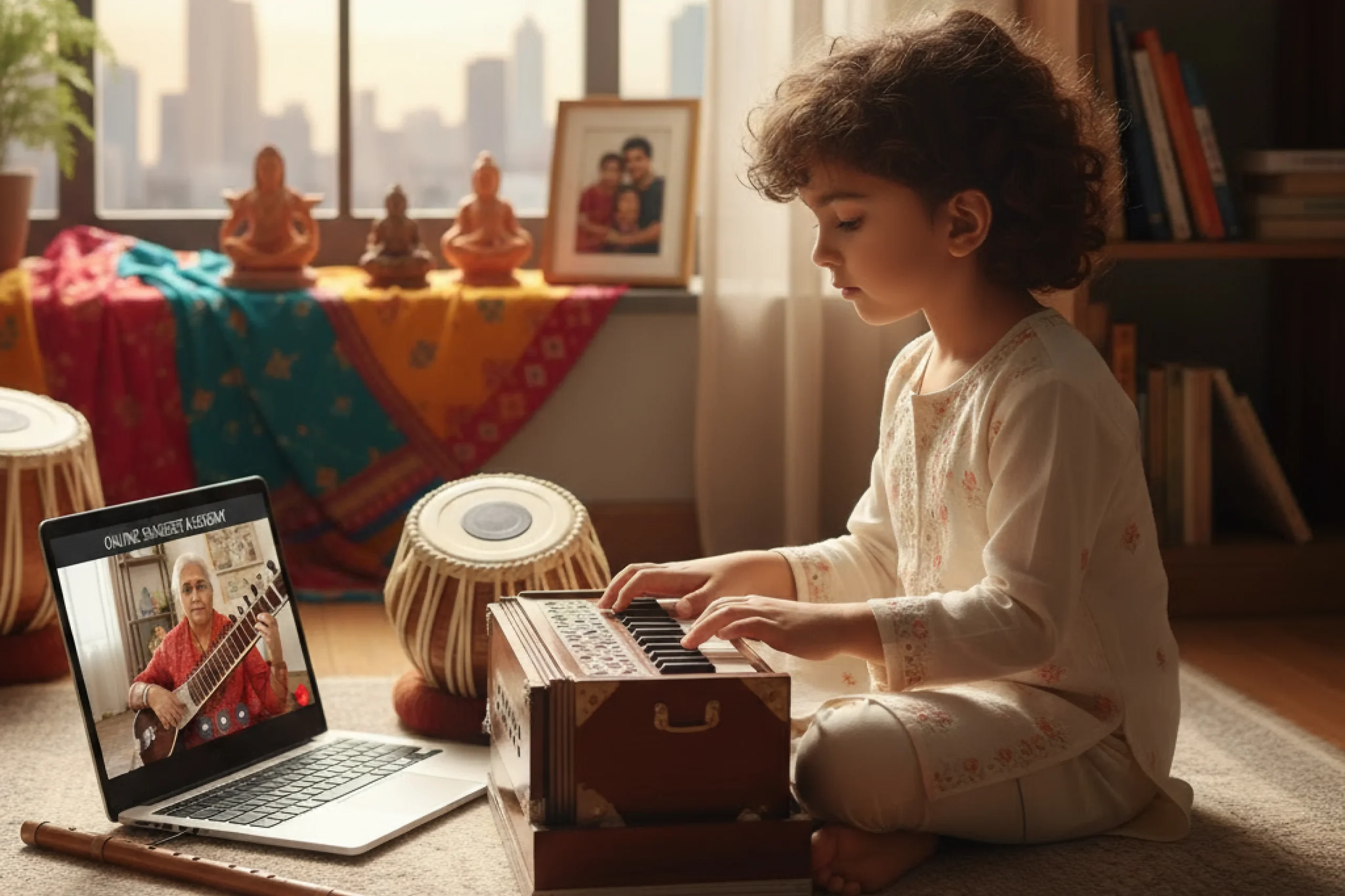
Table of Contents
Our traditions, culture, and diversity are what make India one of the most beautiful countries in the world. Even more than that is the happiness one feels hearing the notes of Indian ragas echoing through a home far from India.
For countless NRI families, raising children with their musical traditions is a matter of celebrations, challenge and pride. This matters a lot, especially as children grow up surrounded by global influences, fast-paced routines, and new cultural experiences. There’s an art of keeping Indian classical music alive; it requires intent, creativity, and genuine excitement in families to balance the past with the present.
Classical Indian music has the power to foster cultural pride, emotional well-being and a deep sense of identity in children. It’s not just a collection of ancient tunes; in fact, it’s a tradition that persuades every generation to find melody, rhythm and poetic storytelling. However, for many NRI families, introducing these traditions requires overcoming hurdles, finding resources, building habits, and keeping children engaged despite distance and changing time.
If you are looking for inspiring ideas to cultivate Indian classical music in your child, you are in the right place. In this blog, we will explore why traditional Indian music roots matter, how to bridge the distance, and what you, as a parent, can do at home to ensure the magic continues, wherever you are.
Why Indian Classical Music Matters for Children Abroad?
- Deepening Cultural Identity
For NRI children, classical Indian music serves as a link to heritage, language, and parental values. These are the children who grow up surrounded by global influences and cultures. So, when they get exposed to Indian classical music instruments or songs, it anchors their sense of identity. Not just nostalgia, it builds self-pride and a bond with traditions that shape who they are.
- Nurturing Life Skills
One of the best outcomes of learning Hindustani or Carnatic classical music in children is the development of discipline, patience, and focus. Learning melodic improvisation or rhythmic cycles requires deep attention, which strengthens study habits and emotional control. So, whether you undertake classical instrument training or play Indian classical music, it can enhance memory, concentration, and creativity. - Emotional and Spiritual Growth
Classical music for children cultivates emotional intelligence. They learn to feel and express their emotions through ragas, acknowledging both their own and others’ feelings. In the bilingual, multicultural world they live in, traditional Indian music offers calm, balance, and even stress relief. - Celebrating India’s Legacy of Greats
Indian classical music has produced some legendary role models for today’s generation. Be it Ravi Shankar’s sitar brilliance or Dr. Balamuralikrishna’s Carnatic mastery, these musicians represent artistic effort, innovation, and passion. Their stories inspire children to view Indian music as a living legacy, something they can actively shape and contribute to.

Understanding the Richness of Indian Classical Music
North Indian classical music, or popularly known as Hindustani classical music, is rich in ragas & talas and is known for its improvisational spirit and emotional depth. As students of Hindustani music, children explore bandishes (compositions) and learn from gharana traditions, each imparting its own flavor.
- Popular instruments: sitar, tabla, harmonium, sarod, flute, violin

- Key features: Extensive improvisation, emotional expressiveness, and cross-regional connections.
On the other hand, Carnatic classical music grows on structured compositions, devotional lyrics, and intricate rhythmic beauty. From Pillai Geethams to the krithis of Saint Tyagaraja, Carnatic music’s repertoire offers children accessible entry points and fosters community cohesion.
- Popular instruments: Veena, mridangam, violin, kanjira, ghatam
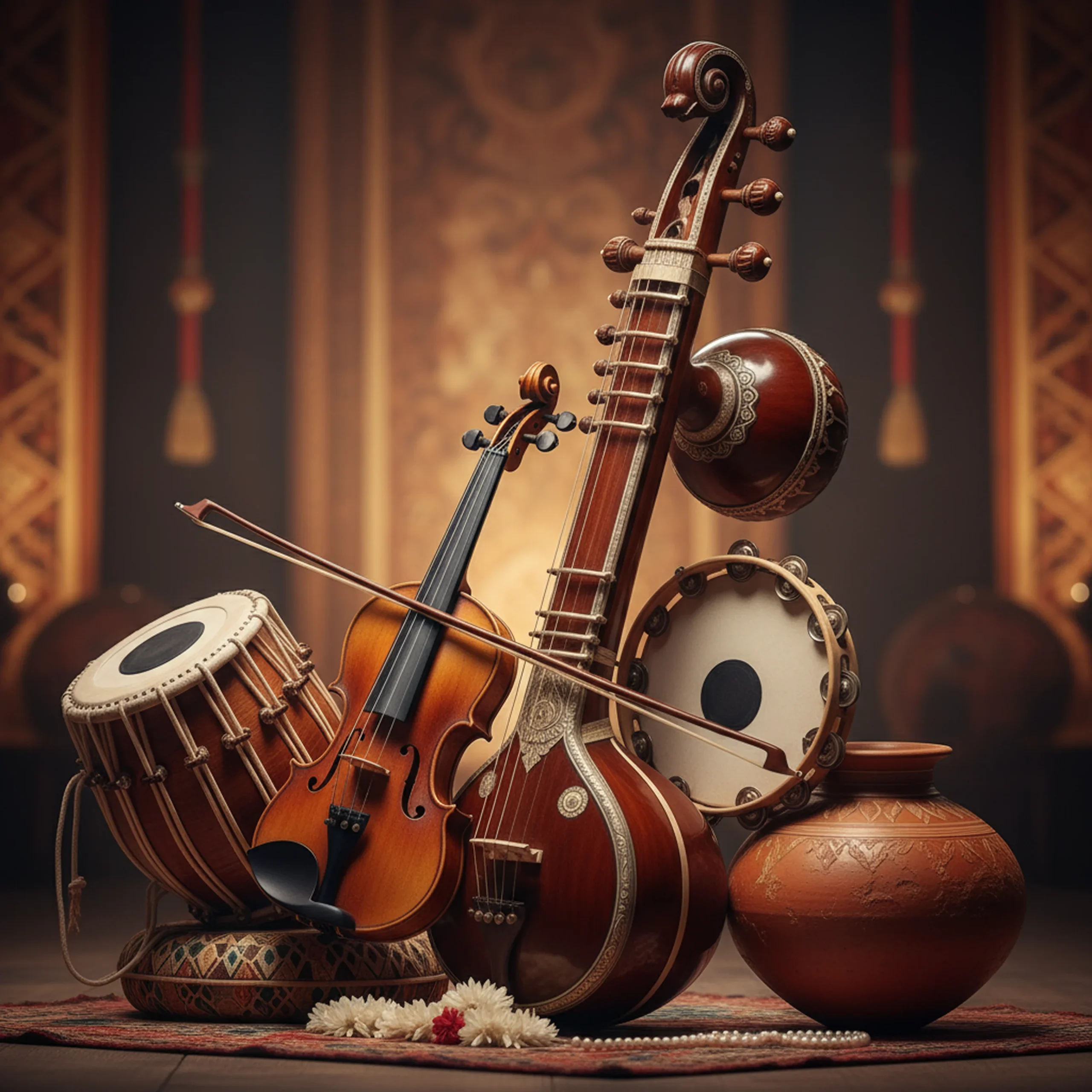
- Key features: Systematic progression of devotional themes and a strong foundation in rhythm and melody.
Every instrument in Indian classical music is a vessel for expressive storytelling. This is why children abroad love to discover the flute’s sweet voice, the depth of the veena, the gentle pulse of tabla, and the sitar’s resonant strings. They get attracted to the dynamic interplay of these instruments in both North and South Indian traditions.
Not only that, classical Indian music songs fuse poetry, devotion, and melody. This helps kids connect with their spiritual values to artistic expression. It instills respect for tradition and love for creativity.
Challenges Faced by Parents while Passing the Indian Music
While access to learning Indian classical music is very easy in India, those staying abroad may face specific challenges. Here are some of them –
- Limited Local Infrastructure
Having the necessary infrastructure is one of the biggest hurdles NRIs face. This includes a lack of qualified teachers and structured classes. In many places, they only offer weekend or seasonal lessons, which can lead to delayed progress and reduced enthusiasm.
- Cultural Fluidity & Motivation
Now, staying abroad has its own pros and cons. A multicultural environment exists for those who live abroad. Children may have different priorities, like sports, Western musical training, language classes, and more. As a parent, you may struggle to keep your child’s motivation, especially if classmates and friends don’t share the same musical interests.
- Access to Practice Opportunities & Community
Since you’re living abroad, festivals are fewer, which naturally means fewer group performances and competitions. This makes it harder to integrate Indian classical music into practice and real life. Although online resources may be helpful, the sense of community will come only from regular performances and peer learning.
- Language and Generational Gap
Some NRI parents themselves may not be fluent in Indian languages or musical terminology, making it harder to guide children through classical Indian music vocal lessons. Generational preferences and lack of ongoing family musical traditions sometimes pose additional barriers.
Practical Ways NRIs Can Introduce Classical Music to Children
While staying abroad may affect a child’s options for learning Indian classical music, here are some things you can do to help them pursue this path.
- Start Early, Keep it Friendly
Children’s minds are like sponges; they absorb anything that you feed them. So, start them off young. Introducing classical music for children at a young age. This will build curiosity and emotional connection. Start by sharing stories on ragas and great musicians. Use playful ways like sing-alongs, musical games, and short listening sessions. Introduce them to music instruments through hands-on experience and let them choose an instrument they like to start with. - Use Online Resources and Structured Learning
We live in a digital era, and online singing classes for kids have changed how families access these resources. There are structured platforms offering high-quality lessons that meet Indian standards, flexible timings, and detailed progress tracking. You can also use apps and digital courses to practice sargam, explore ragas, and learn compositions, building daily habits. Lastly, watch performances by famous artists and invite your children to share what moved them. - Community Events and Diaspora Support
Look for local cultural events, religious gatherings, and community music camps. These group events can make Indian classical music feel relevant and communal. Also, encourage your children to actively participate in talent shows or competitions featuring classical music and popular Indian songs. - Parental Participation
Your child will show genuine interest when they see you doing the same thing. So, learn the basics of Hindustani classical music or Carnatic classical music with them, attend live concerts and play music together at home. Celebrate small victories, milestones like mastering an alap, recital of a bandish or remembering tala cycles. - Family Stories and Peer Influence
Connect music to family memories: share how grandparents or relatives cherished certain songs or ragas. Peer learning, such as small-group lessons or musical “playdates,” can reinvigorate interest. Let older siblings teach and perform with younger ones, fostering shared experience.
Making Classical Music Engaging for Kids Abroad
Here are some ways to make Indian classical music engaging for kids –
- Blend Tradition with Play
In the classrooms, introduce games that incorporate music elements with learning. You can introduce games like “Guess the Raga”, rhythmic clapping competitions or music-based storytelling. Kids can create their own imaginary journeys about Indian festivals or historical moments. - Incorporate Technology Smartly
You can use music apps like YouTube channels, Spotify playlists, and others to showcase both classical and fusion music. Encourage them to remix traditional Indian music or use digital tools to record and share their performances. - Celebrate Achievements
Throw a mini concert for friends, family, or virtual audiences to showcase what they have learnt. Use certificates, badges, and collaborative songwriting projects to acknowledge both effort and exploration.
- Bridge Language Gaps
Pair lyrics translations with original versions, invite children to express the meaning of devotional songs, and explore “fusion” projects that combine Indian classical music instruments with Western ones.
Role of Parents and Community in Sustaining the Tradition
As a parent, here are some things you can do to sustain the tradition –
- Cultural Leadership
You can influence how the traditions grow if you’re part of the diaspora community. Participate actively, share stories, and support sustained practice to help your child view classical Indian music as a cultural anchor and a source of pride. - Building Support Networks
You can join or start WhatsApp groups for parents, online forums or local organisations, particularly for classical Indian music. You can also help organise masterclasses, invite guest musicians for virtual lessons and build a community across continents.
- Foster Lifelong Learning
Learning is a lifelong journey, and that’s precisely how you should encourage your children to pick up mastery in Hindustani classical music or Carnatic classical music. It should be cultivated as a long-term, not a short-term, activity. Support flexible learning styles, combining formal online singing classes for kids with family jam sessions.
Role of Artium: Bridging the Gap with Structured Online Learning
At Artium Academy, we understand the challenges and aspirations families abroad face. Through our online music learning platform, we connect learners worldwide with legendary maestros like Shubha Mudgal and Aruna Sairam, who have curated our Hindustani classical music and Carnatic classical music courses.

- Access to Experts Anytime, Anywhere
At Artium, your child will get real-time feedback and guidance from expert teachers. - Flexible Scheduling for Families
We offer courses that fit your schedule, regardless of time zone. This helps maintain consistency across locations. Each lesson is tailored to suit your goals, ensuring sustainable progress.
- Globally Recognized Music Programme and Certification
We are proud to be India’s first and only online music learning platform offering a globally recognised music programme with an Ofqual-accredited certification. So, whether your child pursues classical Indian music vocals or learning Indian classical music instruments, our music course is designed to meet global standards, supporting lifelong growth and opportunities.
Keeping the Soul of Indian Music Alive Globally
As a parent with roots back in India, passing down Indian classical music to your children is not only a gift to them but also to the world. When your child sings a raga, learns a tala, or performs a kriti with confidence, it’s more than just talent; it’s a heritage in motion.
As India’s premier online music learning platform, we are here to bridge continents, generations, and cultures through our world-class Indian classical music education. Trusted by 30,000+ learners who have started their journey under the guidance of legends, we invite you to enroll your child with us. Make music part of your family’s daily life. Keep your traditions, culture, and Indian heritage alive.
Book a free 1:1 trial with us today.
FAQs
Indian classical music represents the roots, culture and identity of India. It instills pride, builds emotional intelligence and nurtures discipline, patience and creativity. When children learn classical music, they develop a deep, personal connection with Indian traditions amidst global influences.
Hindustani classical music is from North India, while Carnatic classical music is from South India. Hindustani music focuses on improvisation, emotional expression and has gharana-based traditions. Carnatic music is structured, devotional and rhythm-heavy, featuring geethams and kritis. Hindustani music includes instruments like sitar, tabla and harmonium. Carnatic music includes instruments like veena, mridangam and kanjira.
The main challenges faced by NRI parents include limited access to qualified teachers, a lack of regular practice & performance opportunities and cultural distraction from global influence. Other challenges include scheduling constraints, language barriers and sustaining long-term interest without a strong community or cultural ecosystem.
You can do the following to make music engaging –
- Start young and make it playful
- Use offline resources and structured platforms
- Attend community events and concerts
- Participate in music learning yourself
- Use games, apps and storytelling to blend tradition with fun. This approach helps children see classical music as exciting and not intimidating.
Online learning offers flexibility, high-quality instruction from certified experts, regardless of location or time zone. Online learning platforms offer real-time feedback, structured progression and certifications. It removes the barrier of geography while maintaining consistency and excellence in learning.
Artium bridges the gap between Indian tradition and global learners. With mentors such as Shubha Mudgal and Aruna Sairam, and a curriculum aligned with global standards, Artium offers online Hindustani and Carnatic music lessons to aspiring students worldwide. It ensures personalized learning, cultural continuity and certified musical growth for the next generation of artists abroad.



